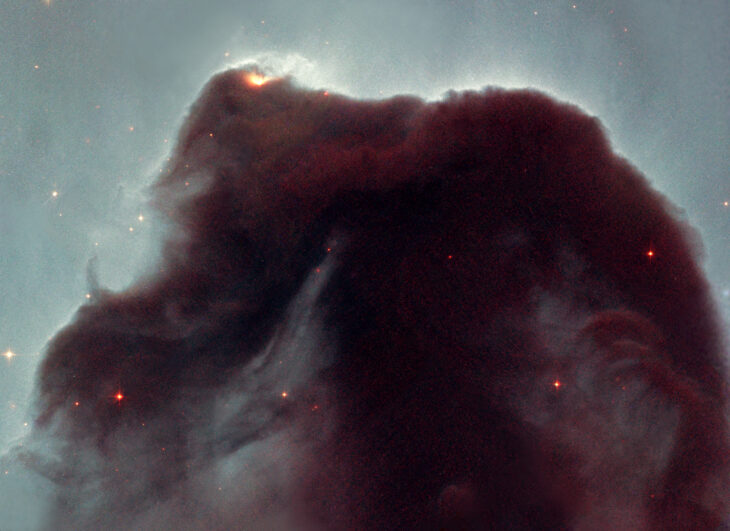Sci-fi enthusiasts might remember Yoda’s description of the Force in Star Wars: The Empire Strikes Back, “Its energy surrounds us and binds us.” A real substance composed of tiny dust particles surrounds every star in the universe, called the Interstellar Medium or ISM. It’s not as exciting as a telekinesis-granting energy field, but it does create stars.
The dust in the ISM is not like dust on bookshelves or in cobwebs, it’s like campfire smoke. The individual particles are too tiny to see, but when collected into clouds, they are visible. Smoke is typically made of carbon, but interstellar dust consists of elements ranging from hydrogen to titanium.
Astrophysicists hypothesized about the ISM for centuries, but their current understanding of its size and function is recent since telescope technology improved beginning in the 1940s. They found the ISM constitutes around 1/7th of the matter in the universe, and it creates stars. However, they still don’t understand how the ISM has changed since the universe formed.
To explore the history of the ISM, Stephen Eales and Bradley Ward from Cardiff University calculated the average density and temperature of dust in the universe over time. The researchers explained these 2 factors determine how the dust clumps together. Since dust is what stars are made of, its “clumpiness” determines when, where, and how many stars will form at a given time.
Scientists have shown the ISM can experience a disruption, or “a great disturbance in the Force,” that causes small sections to clump together. Eventually, the hydrogen in the dust condenses enough that it fuses into helium, transforming a cold, dark cloud of dust into a star. But the cloud has to be dense and cold enough to stick together.
Eales and Ward estimated the temperature and density of interstellar dust in a set of galaxies using 2 methods. To estimate the temperature, they compared the light emitted from galaxies measured in an international study of a small section of sky, called the Herschel-ATLAS survey, to the light emissions predicted by equations of thermal physics. This works because of the heat-light relationship physicists have known since 1900: everything with a temperature above absolute 0 produces light, and hotter things produce more light than colder things. Therefore, less light means colder dust and more light means hotter dust.
Eales and Ward found the temperature of cosmic dust in the ISM has held at 22 Kelvin (-251° Celsius or -420° Fahrenheit) for the last 7 billion years, cold enough for stars to form. They inferred the steadiness of the dust temperature over the past 7 billion years meant it could have remained that temperature further back in time.
To estimate dust density, Eales and Ward’s team analyzed data from the same chunk of sky, this time from Hubble Space Telescope observations. First, they needed to find the dimensions of the galaxies to calculate their volumes. The team used a “digital ruler” on the Hubble images of these galaxies while correcting for the fact that distant objects appear smaller. The distance to these galaxies is also how the researchers determined their relative age, since galaxies farther away are older than nearby ones.
Next, they needed the dust’s mass. The Hubble images provided the total light from each galaxy, which they divided by the light from the dust they found from studying its temperature. This calculation told them how much dust there was in each galaxy. They used a chemistry table to find the mass per dust grain, assuming an average composition, then multiplied the mass of dust times the amount of dust to estimate the total dust mass for each galaxy.
Finally, Eales and Ward divided the total dust masses by galaxy volumes to calculate dust densities. They found dust density increased with time after the Big Bang approximately 14 billion years ago, until it peaked 10 billion years ago. It has declined since, a trend the team found correlated with how many stars formed.
The researchers interpreted their data to mean star-forming material in the universe is on the decline. They concluded that star formation would eventually slow to a crawl, and the universe would be left with only existing stars. Eales and Ward suggested researchers next measure light emissions from more distant dust to further determine the universe’s past and future. With a more extensive dataset, scientists could reduce the uncertainty in their estimates and further refine the history of dust in the universe.


